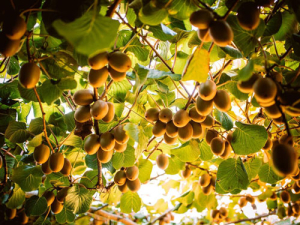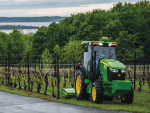The NZ Kiwifruit Growers organisation NZKGI is planning to hold a special dinner at Mercury Baypark stadium in Mt Maunganui to commemorate three things:
- 35th anniversary of the Single Desk structure which underpins industry success
- 30th anniversary of grower advocacy organisation NZKGI
- 25th anniversary of the Kiwifruit Industry Restructuring Act allowing Zespri's commercial operations.
The first kiwifruit, originally known as Chinese gooseberries, were first brought to NZ and planted in Whanganui in the early 20th century but it wasn’t until 1937 that the first commercial plantings were made by orchardist Jim MacLoughlin. In 1959 the Chinese gooseberry became the kiwifruit apparently because of its furry brown appearance resembled that of our national bird – the Kiwi. Over the years the industry has faced many changes and challenges to ensure that growers got the best returns. One of these moves was the establishment of the Kiwifruit Marketing Licensing Authority in 1977 which at one stage was headed by Don Brash – politician and former Reserve Bank Governor.
This was followed by the creation of the Kiwifruit Marketing Board and finally led to the establishment of Zespri in 1997.
Read More
-
A golden season for kiwifruit exports
-
Kiwifruit growers to celebrate trifecta of milestones
-
Record returns forecast for green, organic green kiwifruit
NZKGI spokesperson Dr Mike Murphy says many of the growers from the early days were instrumental in creating the backbone of the industry as we know it today. He says all growers, past and present, as well as friends of the industry, will be coming together at a gala dinner to reconnect and appreciate how far the industry has come.
“The dinner will be an opportunity for attendees to network and hear from some of the industry’s pioneering growers who applied their leadership and negotiating skills at some significant personal cost to lay the foundations for the highly successful industry we have today,” he says.


















